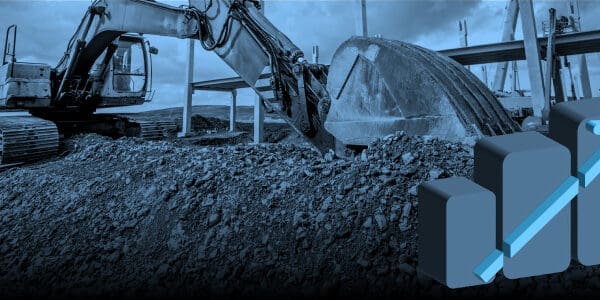
To make the most of your equipment rental business, it’s important to track and calculate your return on investment (ROI) for your software. Knowing what to invest in and what is worth the cost can be difficult, but with the right tools at hand, you can make sure that your equipment rental software is paying for itself. In this blog post, we’ll walk you through how to calculate your ROI so that you can be confident in the choices you’re making for your business.
Rental Software ROI at a Glance
The ROI of equipment rental software can be challenging to measure. You must consider many factors, such as the software’s cost, the time saved by using it, and the increase in efficiency.
However, you can use some general guidelines to calculate the ROI of equipment rental software.
- The first thing to consider is the cost of the software. This includes the initial purchase price and any recurring costs, such as subscription fees or maintenance costs.
- Next, calculate the time saved and benefits experienced by using the software. This can be done by estimating how much time is spent searching for available equipment, contacting renters, and setting up rentals. The software should save time in all of these areas.
- Finally, calculate the increase in efficiency that results from using the software. This can be done by estimating how many more rentals can be processed in a given period or how much quicker each rental is processed.
By taking all of these factors into consideration, it is possible to get a good idea of the ROI of equipment rental software. In general, the software should pay for itself within a few months and will continue to save time and money in the long run.

Costs of Equipment Rental Software
The cost of equipment rental software can be divided into four main categories:
- The initial investment in the solution
- Additional IT costs
- The cost of disruptions to operations
- Staffing costs for the implementation team
The initial investment in a rental software solution will vary depending on the size and complexity of your business. However, you can expect to pay a significant upfront fee for the software itself, as well as any customization or integration costs.
Additional IT costs associated with a rental software solution include hosting fees, data storage fees, and ongoing support and maintenance costs. These costs can add up quickly, so it’s important to factor them into your overall budget.
Disruptions to operations are often one of the most overlooked costs associated with a new software implementation. Rental businesses rely heavily on their existing systems and processes, and any disruptions can lead to lost revenue. Make sure to factor in lost business costs when considering a rental software solution.
Finally, staffing costs for the implementation team can be significant, especially if you don’t have an in-house IT team. You’ll need to factor in the price of training and onboarding your staff, as well as any overtime or contract labor costs.
Benefits of Equipment Rental Software
Rental software can do wonders for your business, from increasing revenue to improving customer satisfaction. Here are just a few of the benefits of using rental software:
Revenue increase: Equipment rental software can help your business generate more revenue in several ways. By streamlining the equipment rental process, you can make it easier for customers to rent from you, which can lead to increased sales. In addition, by reducing the amount of time and effort required to manage rentals, you can free up staff time to focus on other revenue-generating activities.
Vendor support synergy with your internal team: One of the benefits of equipment rental software is that it can help improve communication and coordination between your internal team and your vendors. By keeping track of all equipment rental activity in one place, you can avoid duplication of effort and ensure everyone is on the same page. This can lead to more efficient operations and improved vendor relations.
Improvement in customer satisfaction: Another benefit of equipment rental software is that it can help improve customer satisfaction. By making it easier for customers to rent equipment and providing them with more information about available options, you can make the rental process more user-friendly and improve the overall experience. This can lead to increased customer loyalty and repeat business.
Increased efficiency: One of the most important benefits of equipment rental software is that it can help increase efficiency in your operation. By automating manual tasks and eliminating errors, you can reduce the time required to manage rentals. This can lead to improved productivity and cost savings for your business.
Improved decision-making: Equipment rental software can also help improve decision-making in your business. With access to data and analytics, you can make more informed decisions about equipment purchases, rental pricing, and other strategic decisions. This can lead to improved profitability and a competitive edge for your business.
How Equipment Software ROI Relates to Your Business
As a business owner, it’s essential to understand the ROI of any software you’re considering implementing. This is especially true for equipment rental software, as there can be a lot of variables to consider. When calculating the ROI of equipment rental software, you’ll need to look at the main problem areas for your business, evaluate future plans for expansion and diversification, and consider efficiency strategies that can boost your revenue.
Problem Areas
The first step is to identify the main problem areas for your business. What are the most significant pain points when managing your equipment rentals? Do you have difficulty tracking inventory? Are you losing money due to late returns or missing items? Understanding where your business struggles the most will help you determine if equipment rental software is the right solution.
Future Plans
Next, you’ll need to evaluate your future plans for expansion and diversification. Are you planning on adding new locations or expanding your product offerings? If so, equipment rental software can help you manage your inventory across multiple sites and keep track of different types of equipment. This will be especially helpful if you plan on offering new services that require specialized equipment.
Efficiency Strategies
Finally, you’ll want to consider the various efficiency strategies that can boost your revenue. Equipment rental software can help you automate tasks like billing and invoicing, which can save you time and money. Additionally, many rental software programs offer features like online booking and real-time availability, making it easier for customers to do business with you.
To calculate the ROI of your investment in equipment rental software, you need to consider all of the costs and benefits associated with its use. By doing so, you can make an informed decision about whether or not this software is right for your business. If you’re interested in learning more about how Wynne Systems can help you improve your operations with our equipment rental software, please contact us today. We would be happy to answer any questions you have and provide a demonstration of our products.





